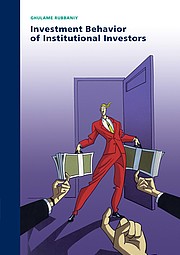Investment Behavior of Institutional Investors Defended on Friday, 31 May 2013
This study examines the portfolio choice anomalies and trading strategies of two types of institutional investors, Dutch pension funds (PFs) and US mutual funds (MFs), and presents some explanation for the unexpected behavior in their trading. Particularly we focus on the determinants of home bias, feedback trading and herding in the investment behavior of these institutional investors. We find that Dutch PFs’ domestic share in portfolio allocation (‘home bias’) diminishes over time, and that fund characteristics, such as economies of scale, experience, funding status and pension plan (DB or DC), significantly affect their asset allocation across multiple asset classes and markets. We disprove the theory that all PFs are passive traders by finding that Dutch PFs display a monthly turnover rate of approximately 8.5%. We find strong evidence for contrarian trading by Dutch PFs on an aggregate basis; however, it varies considerably across asset classes. Furthermore, we find that lagged institutional demand for a security drives momentum investment in riskier assets and contrarian investment in less risky assets. A security’s contemporaneous and lagged performance drives contrarian investments across asset classes. Using quarterly holdings of US equity MFs we investigate the herding dynamics in their long-term trading behavior and find that funds styles, market volatility, the increased participation of MFs in the financial markets and MFs size/capitalization are important determinants of herding dynamics in their trading behavior. The results endorse one of our hypotheses that “in the long term, US equity mutual funds limit themselves to certain stock characteristics”.
Keywords
asset allocation; home bias; pension funds; portfolio choice; feedback strategies; financial turmoil; herding; institutional investors; portfolio turnover; realized volatility; mutual funds; herding behaviour; capital markets







